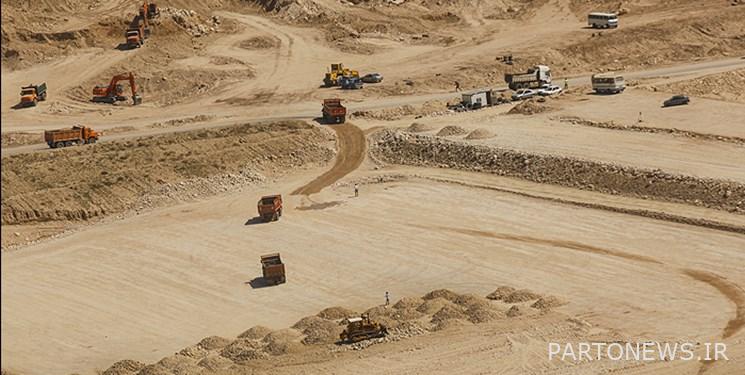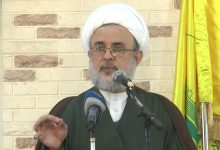Siraf Infrastructure Company Overwhelmed with Debt Debt / What is the New Government’s Approach to the Siraf Refinery?

According to the economic correspondent of Fars News Agency, at the same time with the completion of the South Pars phases in June 1994, the executive operation of the comprehensive Siraf refining project, with the aim of avoiding the sale of valuable gas condensate, maximizing gas extraction from the South Pars joint field Began.
The design of this refinery started with the selection of 8 investors as a refining complex with 5 units with a capacity of 60,000 barrels per day. Over time, due to problems such as major flaws in the Ministry of Petroleum’s initial plan, the inability to finance the plan and the differences between investors caused the refining capacity of the plan, the composition of investors and the change of the final value chain to change. These shortcomings in the initial design delayed the start of the project by several years.
* What is the new arrangement of Siraf Refining Complex?
Thus, from the beginning of 1397, changes were made in the structure of the Siraf project with the addition of new shareholders, the elimination or merger of some refineries, as well as the addition of petro-refining projects. Eventually, the remaining projects at Siraf were reduced to a capacity of 300,000 barrels per day.
«Siraf Green Star Refinery“With a capacity of 120,000 barrels and”Siraf Pioneers Refining Development Company»،«South Adish Company” And “Javo Parto Energy CompanyEach with a capacity of 60,000 barrels were projects that were eventually scheduled to begin construction with joint infrastructure.
All of these companies have received the conditions for receiving food respiration from the Ministry of Petroleum under the Law on Supporting the Development of Downstream Oil and Gas Condensate Industries, except for Adish-e-Junubi, which did not show a desire to receive food respiration.
In addition, 4 project development companies, «Siraf Comprehensive Refining Infrastructure CompanyIs also involved in this project and is responsible for carrying out activities and creating joint facilities between the refineries of the Siraf refinery complex.
Figure 1- Siraf petro-refining projects that have received food breathing license
* Siraf Infrastructure Company, drowning in arrears
Since the demolition of the Siraf refinery, steps have been taken to advance the project, including leveling and preparing the land, delivering a complete package of basic design engineering, obtaining the required legal permits, including a contract with the National Oil Company for International Affairs, and a natural gas purchase contract with National Gas Company, passive defense studies, sea water extraction license, environmental studies and obtaining licenses, electricity supply during construction, electricity supply during operation, as well as technology purchase contract for the units licensed under this project.
However, this amount of progress after “more than 7 years” is “almost nothing” for a project that had the special support of the then officials, namely Bijan Zanganeh, former Minister of Oil, and Alireza Sadeghabadi, former CEO of the National Company for Refining and Distribution of Petroleum Products.
After further follow-up, it was found that the project of “Southern Adish Company” left this one-sided structure in 1397 without paying its debts and transferring its shares in the infrastructure company, and continued its construction process separately. The company has made more than 50% progress so far due to receiving facilities from the National Development Fund. Of course, how South Adish managed to get the facilities of the National Development Fund is a matter of debate, which is not the subject of this report.
But out of the remaining three designs; The non-participation of the investors of these projects in fulfilling the financial obligations to “Siraf Comprehensive Refining Infrastructure Company” since 1397 until now and also the lack of serious determination for the progress of the projects, shows the ambiguity in the future of the projects.
In this regard, despite holding several meetings to finance the development of joint infrastructure and participation in increasing the capital of the infrastructure company, the three mentioned projects, which are the shareholders of the company, have had little participation to the extent that currently Not only is it unable to pay its arrears to contractors and the South Pars Special Zone, but it is also struggling to pay the current costs and wages of its employees, according to informed sources.
What is the new government’s approach to the Siraf refinery?
Undoubtedly, the principled solution to get rid of the problem of excess gas condensate storage and turn the threat of sanctions into an opportunity is to refine gas condensate inside the country and turn it into value-added products. An experience that happened exactly at the Persian Gulf Star Refinery. In addition, the proper location of the Siraf refinery complex to reduce condensate transportation costs, electricity and gas supply, port, post and wharf at the Siraf site and access to consumer markets, feed respiration rate, acceptable internal rate of return and ultimately employment and increase production Gross national is one of the things that experts cite as the benefits of this plan.
The two ambiguities facing the Siraf refineries are related to the supply of gas condensate required by the projects due to the pressure drop in the gas fields as well as the new government’s approach to them. In this regard, it is necessary to determine the problems and ambiguities of this project, considering the strategic benefits of constructing Siraf gas condensate refineries.
Therefore, first, the definite and long-term feed supply plan of these projects should be determined and announced to them, and if necessary, the given permits should be reviewed so that the remaining projects have a serious determination to build a refinery in Siraf. After this, the remaining companies should not have an excuse for not participating in the financing of the comprehensive infrastructure company.
End of message / b
.

